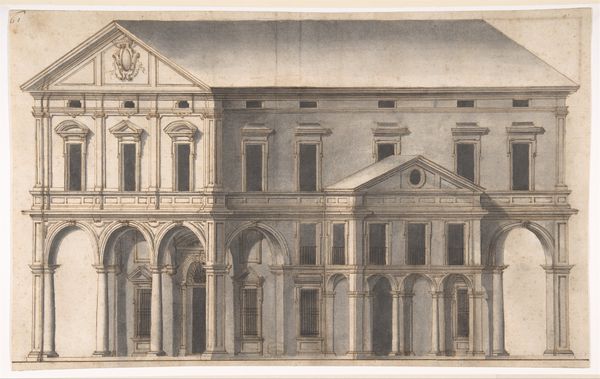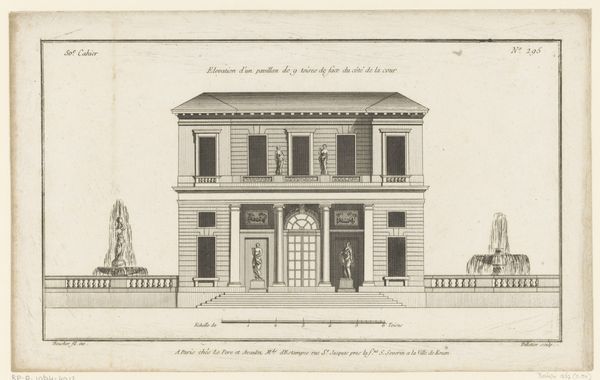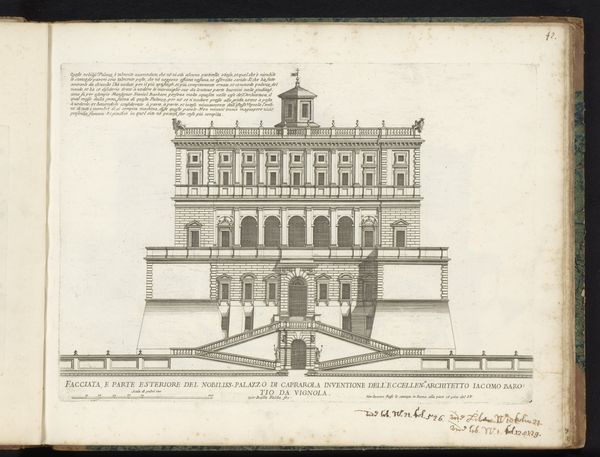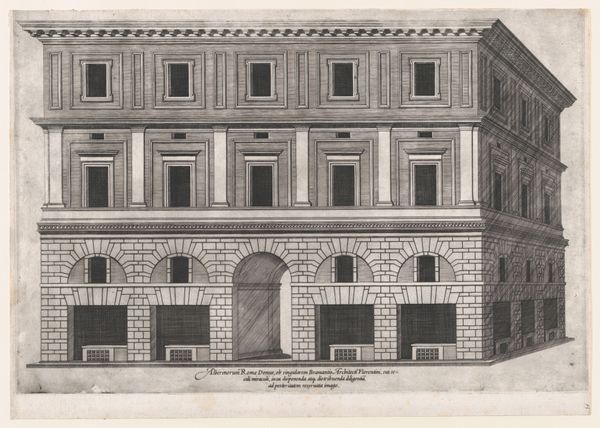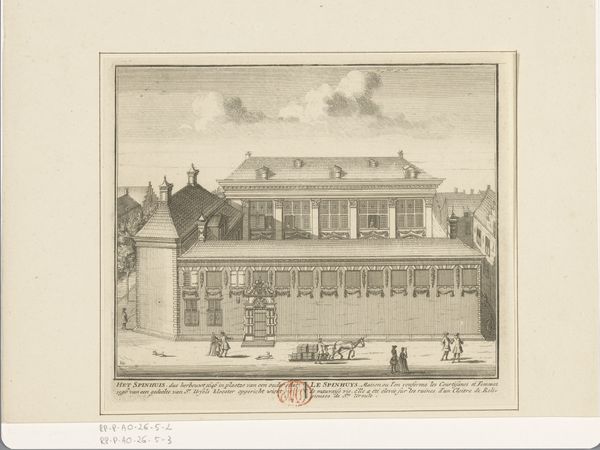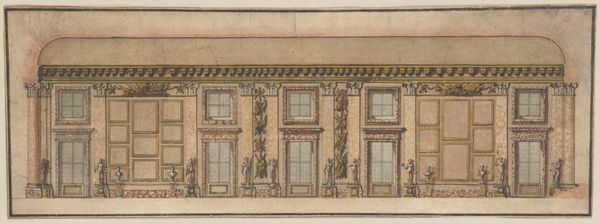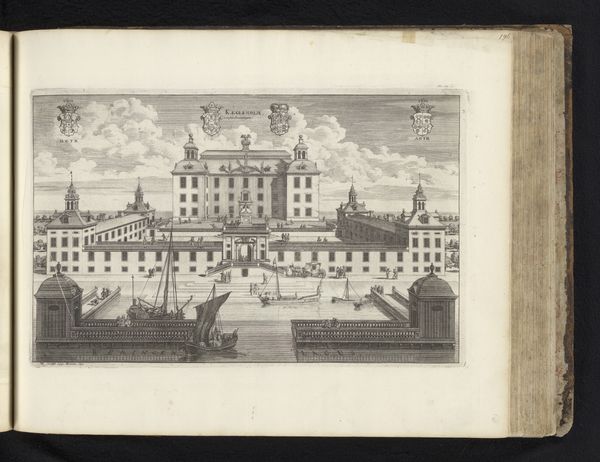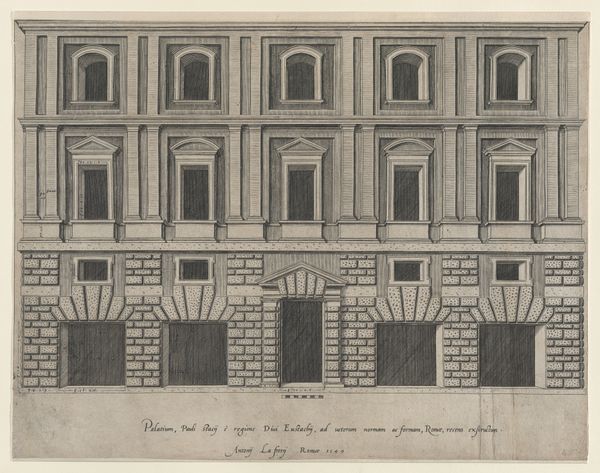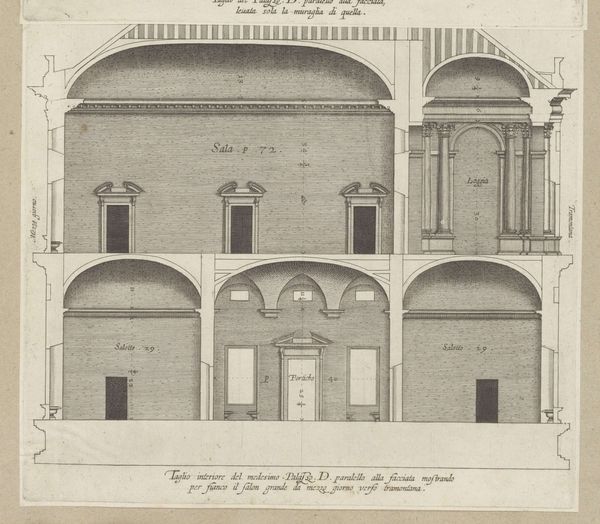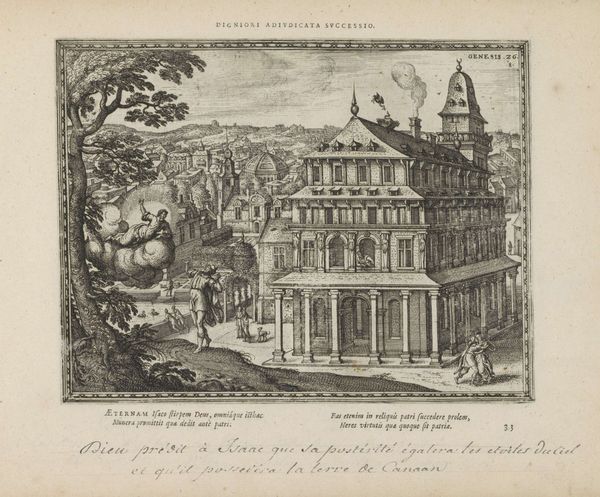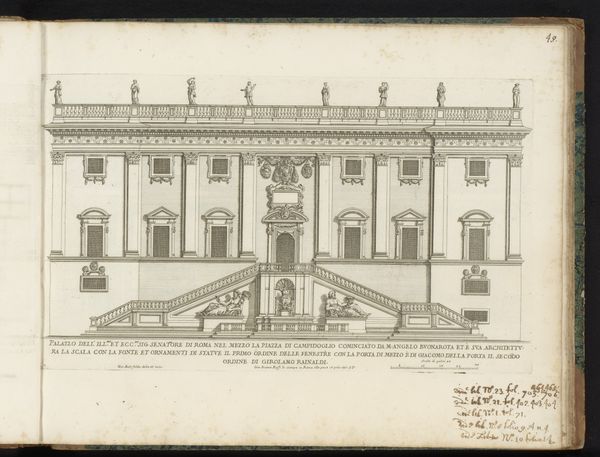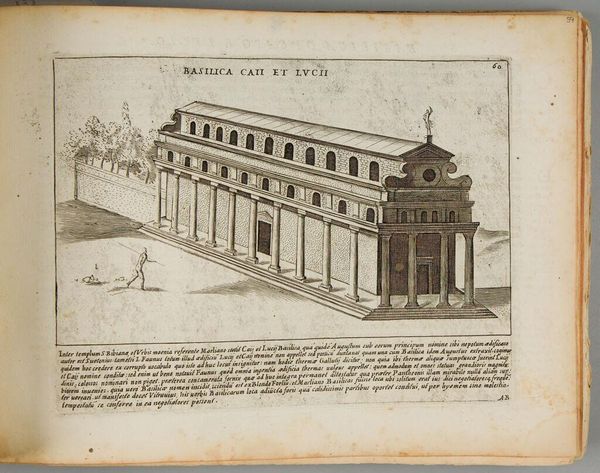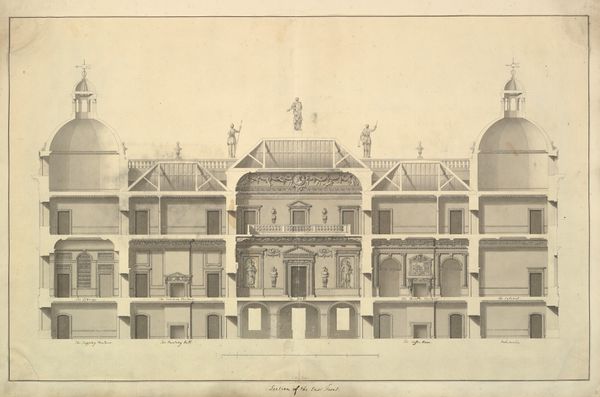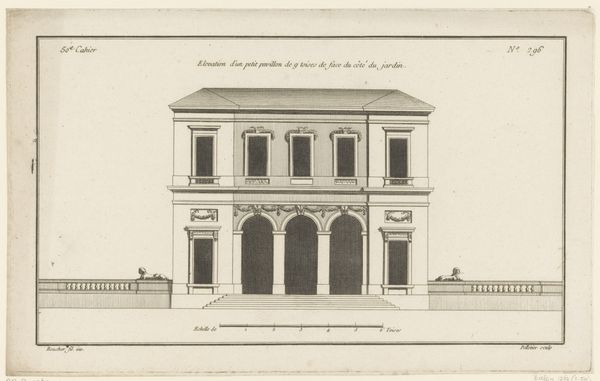
Elevation for the Episcopal Palace at Cahors, France 1740 - 1760
drawing, coloured-pencil, print, etching, architecture
drawing
coloured-pencil
baroque
etching
perspective
coloured pencil
architecture
Dimensions: 9 1/4 x 16 7/8 in. (23.5 x 42.9 cm)
Copyright: Public Domain
Editor: This is “Elevation for the Episcopal Palace at Cahors, France,” an architectural drawing from around 1740 to 1760. It’s an etching with colored pencil, so there’s a sense of precision but also a delicate quality to the shading. The overall impression I get is one of controlled power and hierarchy, with that clear central axis and symmetrical design. What historical narratives do you see reflected in this depiction of power? Curator: Exactly! This elevation offers a window into the material culture of power during the mid-18th century. Consider, who commissions such a grandiose structure? It's not merely a building; it’s a statement of the Church’s authority within a hierarchical society, literally elevating its status in the landscape and, therefore, social order. Think about what such visual statements exclude and render invisible. Editor: The "invisible" is an interesting way to describe it. Does this mean considering whose labor made this project possible or perhaps whose homes were displaced to create the “grand Place?" Curator: Precisely. The baroque style, with its emphasis on grandeur, was frequently employed to legitimize ruling elites. This palace, as a symbol of power, relies on underlying systems of inequality. Understanding the lived experiences of marginalized communities gives a richer and often challenging viewpoint. How does analyzing art through this lens of social impact shape your perspective? Editor: It certainly encourages me to consider the artist’s positionality and their motivations for participating in this representation of power. It is not just an architectural plan but an argument. The power of this image depends upon complex societal agreements. Curator: Absolutely. By examining these drawings critically, we begin to question and unpack the very structures that perpetuate power imbalances, even in seemingly "objective" representations. Editor: Thanks, it really reframes how I understand even seemingly neutral architectural drawings!
Comments
No comments
Be the first to comment and join the conversation on the ultimate creative platform.
